While do-it-yourself projects can be fun and fulfilling, there is always a potential for personal injury or property damage. We strongly suggest that any project beyond your abilities be left to licensed professionals such as electricians, plumbers, and carpenters. Any action you take upon the information on this website is strictly at your own risk, and we assume no responsibility or liability for the contents of this article.
What Can I Do about Powdery Mildew on My Plants?
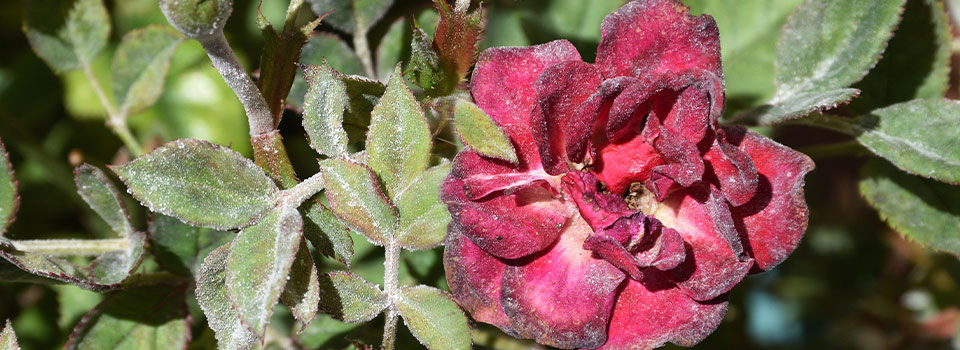
Powdery mildew is one of those pesky and persistent problems that every gardener encounters at one point or another. As the name suggests, powdery mildew appears as a white- or gray-looking powder on the leaves and stems of infected plants. Though powdery mildew is hard to miss because it pops up as big splotches on leaves, it can also start under leaves, on stems, flower buds, and fruits, making it easier for it to sneak up on you. Before you know it, your squash plants look like someone dropped a bag of flour on them. Like with most garden problems, prevention is key. But even if powdery mildew has moved in, there are still things you can do to manage it.
What is Powdery Mildew?
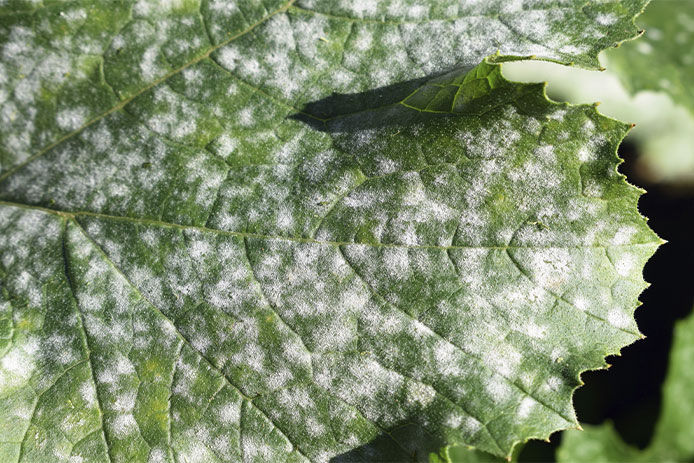
Powdery mildew is a disease caused by several different species of funguses that can impact and infect a variety of plants. While it's commonly found on summer squash, winter squash, and cucumber plants, it can also be found on roses, peonies, lilacs, phlox, fruiting plants, and other kinds of flowers. While powdery mildew rarely kills a plant, it can weaken it, making your plants more susceptible to insects, other diseases, and poor production. Powdery mildew is sort of an overhead label for a variety of host-specific fungal spores. That means that the powdery mildew that attacks your lilacs probably won't spread to your summer squash plants because the spores are specific to one variety of plant.
While powdery mildew can be found just about anywhere, it particularly loves climates with extended periods of warm temperatures and dry conditions. It typically shows up in mid-to-late summer when the conditions are just right.
Symptoms of Powdery Mildew
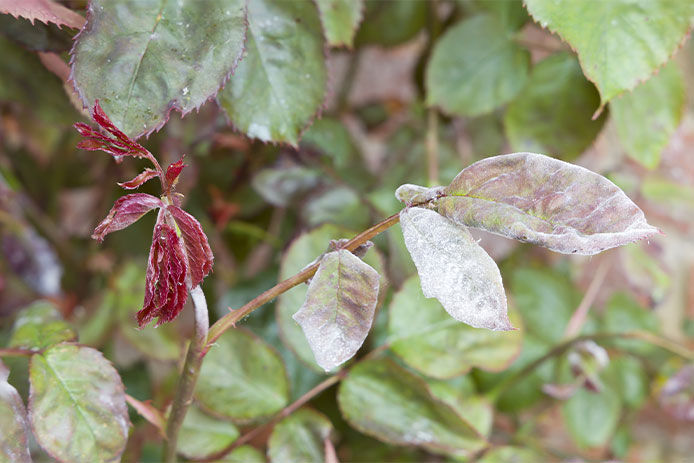
If it's early August and your cucumber plants are growing this dusty gray powdery stuff, chances are you've got some powdery mildew on your hands. Blotches or patches of dusty white or gray powder are most likely powdery mildew. Other symptoms are stunting plants, low fruit production, withered leaves, yellowed leaves, and, overall, a sad-looking plant. Because powdery mildew takes over the leaves, it impairs the plant's capacity to take in enough sun and photosynthesize all the nutrients it needs. This can cause infected leaves to fall from the plant, withering, yellowing, and poor yields.
How to Prevent Powdery Mildew
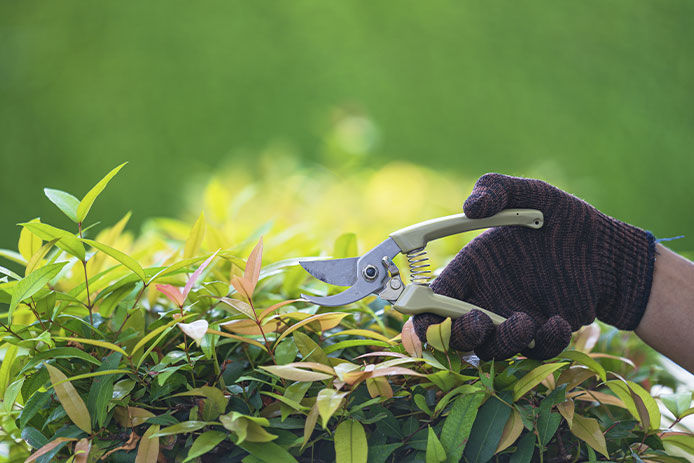
Prevention is important when it comes to most garden issues, including powdery mildew. While no plants are immune to the fungus, some hybridized plants are resistant to it. If you tend to have a big powdery mildew problem, opt for growing resistant plants to make sure that they can still grow, even if struck by powdery mildew. It's entirely possible for plants to grow and produce normally, even with some infection, so growing resistant varieties definitely helps.
Powdery mildew lives and can overwinter in plant material, so tidying your garden at the end of the growing season and practicing good garden hygiene can be helpful to stop this fungus from moving in and spreading. Avoid composting old plants as the fungal spores can live in your compost all winter. Instead, burn old plants to kill all spores. Since fungal spores can travel via air or water, be aware of splashing water or moving plant debris on windy days.
Circulation is key for reducing the infection and spread of powdery mildew. Using clean garden shears, prune away extra leaves to promote more air circulation around the plant. Also, take care of garden planting specifications to be sure that your plants have enough space between them as they grow.
While watering from above is the more natural way to go, water droplets and wet leaves can be harbors for spreading powdery mildew. When possible, try to instead water from underneath and not from above. Installing a drip irrigation system can be a helpful and low-maintenance way to be sure that your plants get the water they need without getting their leaves all wet.
How to Manage Powdery Mildew
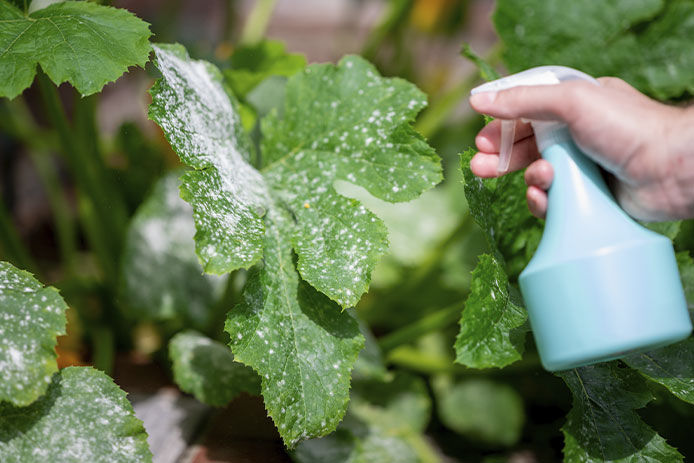
Once powdery mildew has struck, don't fret. Not all hope is lost! Powdery mildew can be managed throughout the growing season to ensure that it doesn't ruin your plants. Once you've taken preventative measures so the infection doesn't spread, it's time to put management protocols in place.
While the general rule of thumb is to destroy infected plants, it's usually hard to convince gardeners to throw away their peonies and squash plants. Instead, use clean garden shears to cut away badly infected leaves and burn them. Pruning away infected leaves will also increase circulation. Be sure to sterilize the shears afterward so they don't spread the infection to other plants.
The best way to manage a powdery mildew infection is with a fungicide. While there are many chemical options on the market, there are also organic and easy DIY fungicides that you can make with basic household ingredients. Fungicides that contain potassium bicarbonate, neem oil, sulfur, or copper are good at controlling powdery mildew. It's also easy to make your own with 1 tablespoon of baking soda mixed with 1 teaspoon of liquid non-detergent soap in a gallon of water. Put in a spray bottle and apply generously. While fungicides won't cure powdery mildew, they can prevent the spread to more plants and leaves. Reapply fungicides every 7--14 days for continuous protection. When using a store-bought fungicide, follow the instructions on the bottle for the best results.
Powdery mildew is an unattractive nuisance, but it's not the end of the world. By taking the appropriate steps for prevention and management, you're sure to still get the garden results you want, even if powdery mildew pops up in a few places.